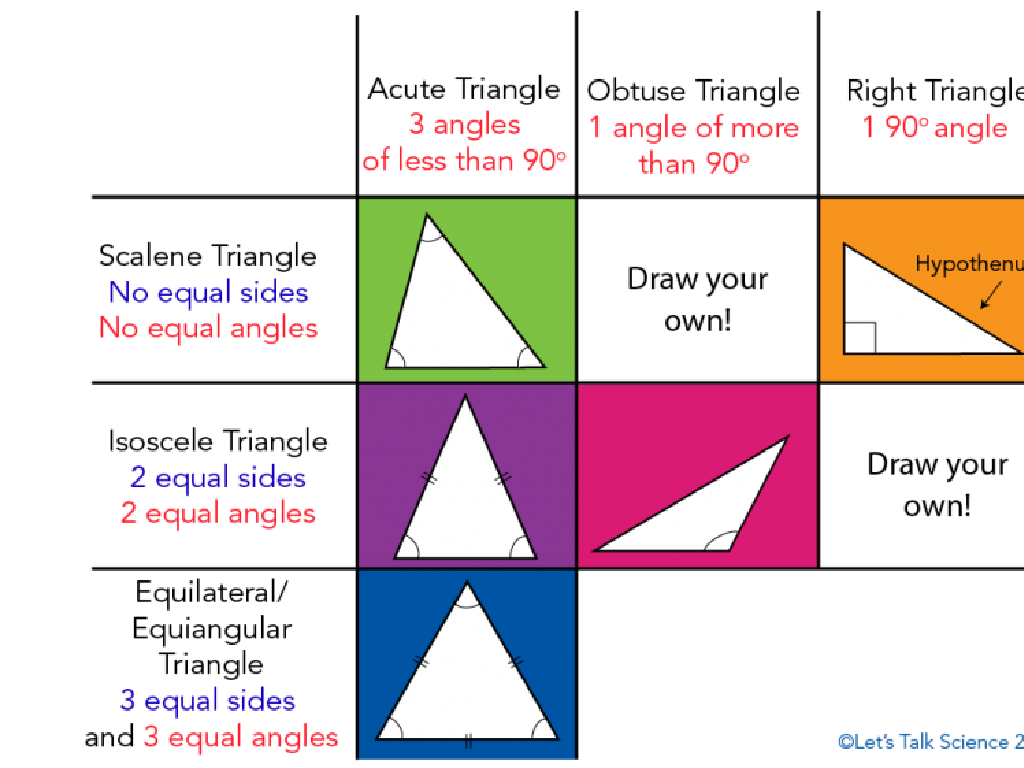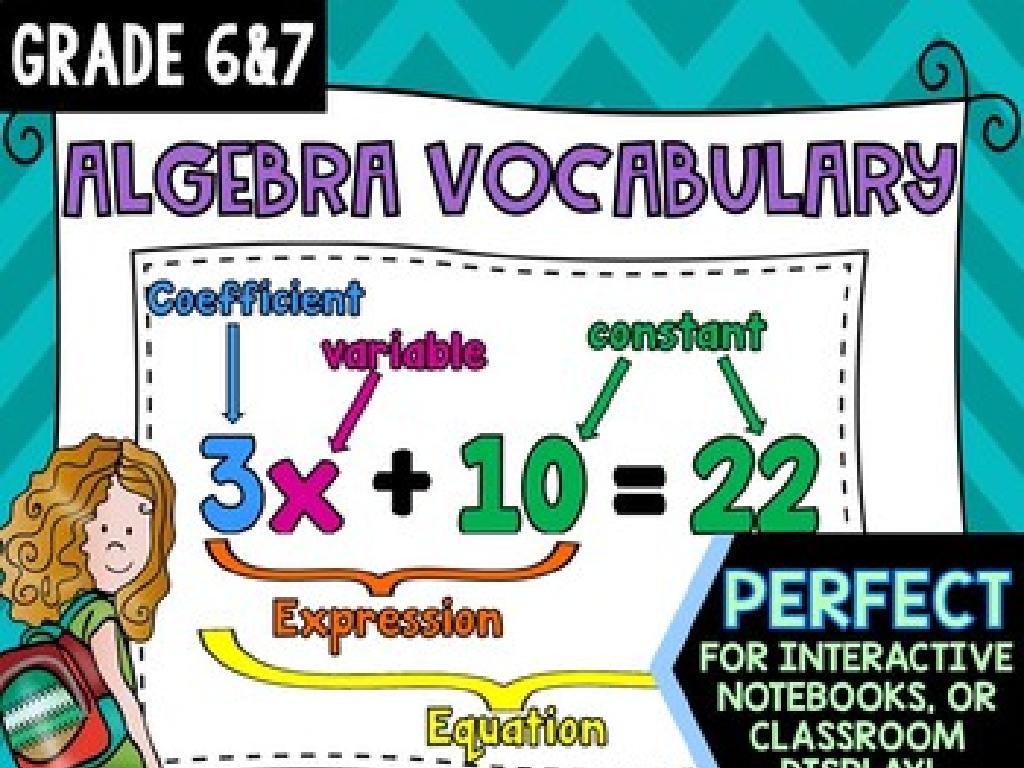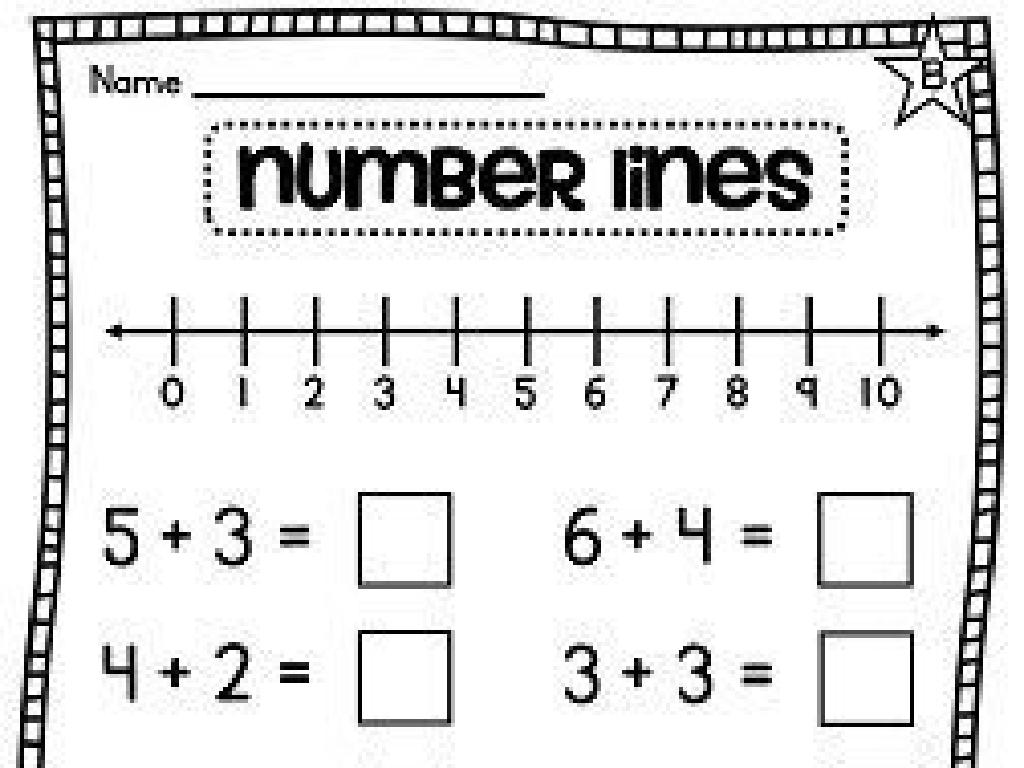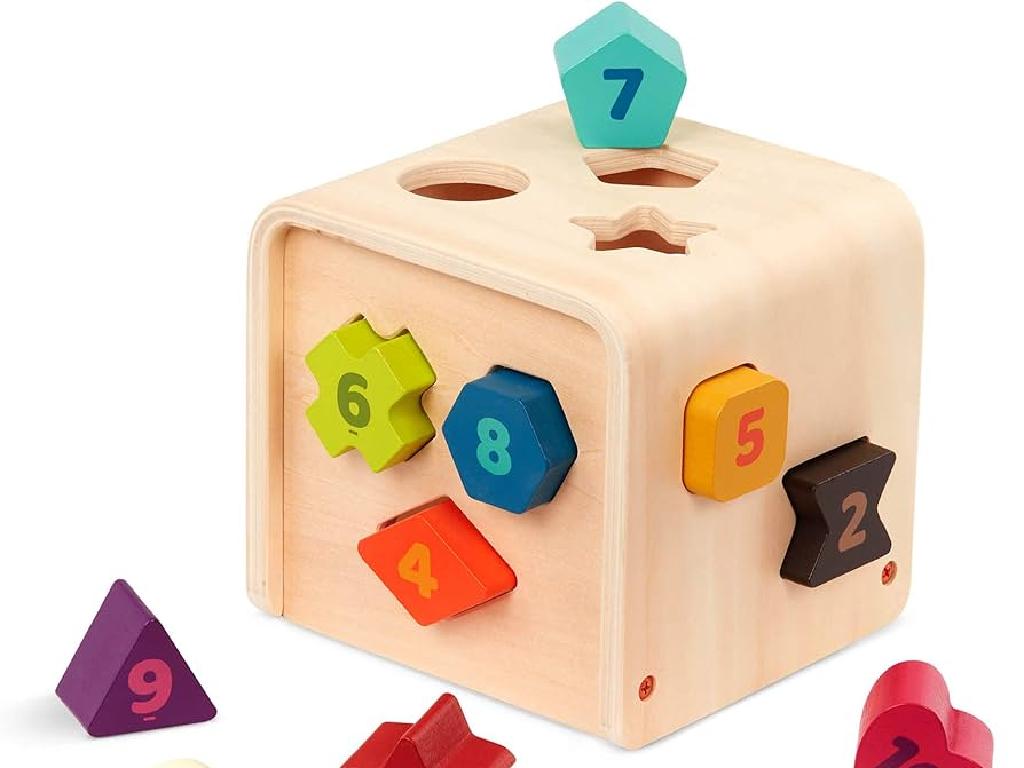Which Metric Unit Of Length Is Appropriate?
Subject: Math
Grade: Second grade
Topic: Metric Units Of Length
Summary: This engaging second-grade math presentation introduces metric units of length, focusing on millimeters, centimeters, meters, and kilometers. Students learn how to choose the appropriate unit for measuring objects of different sizes with relatable examples and interactive classroom activities, such as measuring and scavenger hunts. The lesson emphasizes the importance of selecting the correct metric unit to ensure accurate, clear measurements in real-life situations, reinforcing math skills aligned with education standards.
Please LOG IN to download the presentation. Access is available to registered users only.
View More Content
Exploring Metric Units of Length
– What is length measurement?
– Length tells us how long something is.
– Discovering metric units
– Metric units include millimeters, centimeters, meters, and kilometers.
– Reasons we use metric units
– Metric units are easy to use because they are based on the number 10.
– Examples of metric measurements
– A pencil is about 15 centimeters long, and a park might be 1 kilometer wide.
|
This slide introduces second-grade students to the concept of measuring length using metric units. Begin by explaining that length is a way to find out how long or short an object is. Introduce metric units such as millimeters (mm), centimeters (cm), meters (m), and kilometers (km), and explain that these are part of a system used around the world for measuring. Discuss how the metric system is based on multiples of 10, making it simpler to understand and convert between units. Provide relatable examples, such as common classroom objects measured in centimeters and distances in meters or kilometers that they might be familiar with, like the length of a playground. Encourage students to think of other items they could measure using these units.
Exploring Metric Units of Length
– Millimeters: tiny units
– mm is used for small objects like a bead
– Centimeters: staple width
– cm is the width of a staple or a crayon
– Meters: as long as a guitar
– m is about the length of a guitar or a baseball bat
– Kilometers: city to city
– km measures long distances, like from school to home
|
This slide introduces students to the common metric units of length. Millimeters (mm) are the smallest unit and can be used to measure very small items like beads. Centimeters (cm) are slightly larger and can be compared to the width of a staple or the diameter of a crayon. Meters (m) are suitable for measuring things like the length of a guitar or a baseball bat. Kilometers (km) are used for much longer distances, such as the distance from one city to another or from school to a child’s home. Use real-life objects to help students visualize the size of each unit. Encourage students to think of other examples of items that might be measured in each unit to reinforce their understanding.
Choosing the Right Metric Unit of Length
– When to use millimeters?
– Use for very small objects, like a bead or a pencil tip.
– When to use centimeters?
– Use for small objects, like a notebook or a crayon.
– When to use meters?
– Use for bigger things, like a guitar or a car.
– When to use kilometers?
– Use for very long distances, like the length of a road or between cities.
|
This slide is aimed at helping second-grade students understand the appropriate situations to use different metric units of length. Millimeters are suitable for measuring tiny items that are smaller than the width of a pencil. Centimeters are ideal for objects that are a bit larger, such as the length of a crayon or the width of a notebook. Meters are used for much larger items, like the height of a door or the length of a car. Kilometers are used for measuring very long distances, such as the distance from one place to another, like from home to school or between cities. Encourage students to think of examples from their daily lives and discuss why choosing the right unit of measurement is important.
Choosing the Right Metric Unit
– Measuring a pencil in centimeters
– Pencils are small, so we use cm
– School distance in kilometers
– Kilometers are used for long distances, like to school
– Match objects with metric units
– Practice with everyday items
– Use items like a book, a door, or a park
|
This slide aims to help students understand the practical application of metric units of length by relating them to real-life objects and distances. Centimeters are suitable for measuring small objects like pencils, while kilometers are used for measuring longer distances, such as the way to school. Encourage students to think about the size of the object or distance to be measured and choose the most appropriate metric unit. Provide various everyday items for the students to practice with and reinforce the concept that different units are used based on the size of what’s being measured. This will help them grasp the concept of scale and measurement.
Let’s Practice Together: Choosing the Right Metric Unit
– Class activity: Measure objects
– Choose the most fitting metric unit
– Is it best measured in millimeters, centimeters, or meters?
– Discuss our choices together
– Learn from each other’s findings
|
In this interactive class activity, students will engage in hands-on learning by measuring various objects provided in the classroom. The goal is to help them understand the practical application of metric units of length such as millimeters, centimeters, and meters. Provide a range of items of different sizes for the students to measure. After measuring, they will decide which metric unit is most appropriate for each object’s length. Facilitate a class discussion where students share their measurements and reasoning, allowing them to learn collaboratively. As a teacher, guide them to understand why a particular unit is more suitable for certain measurements. Possible objects for measurement could include a pencil, a book, a door, or a piece of string. This activity will reinforce their understanding of metric units and how to choose the right one for different situations.
Scavenger Hunt: Measuring with Metric Units
– Find objects to measure in class
– Record the object and its metric length
– Choose the right metric unit for each
– Is it best measured in millimeters, centimeters, or meters?
– Share your measurements with the class
|
This class activity is designed to help students understand and apply their knowledge of metric units of length in a practical and engaging way. Set up a scavenger hunt where students search for items in the classroom to measure. They should write down the name of the object and its length using the most appropriate metric unit (millimeters, centimeters, or meters). Encourage them to think critically about which unit is most suitable for each object. For example, a pencil might be best measured in centimeters, while the length of the classroom might be best measured in meters. After the activity, have students share their findings with the class to reinforce their understanding and to practice using metric units in real-life scenarios. Provide guidance on how to measure correctly and ensure each student participates.
Conclusion: Choosing the Right Metric Unit
– Recap metric units of length
– Remember: millimeters, centimeters, meters, and kilometers
– Importance of correct unit selection
– Using the right unit makes our measurements accurate and understood by others
– Open floor for student questions
– Review with examples and activities
– Let’s go over some examples together to make sure we’ve got it!
|
This slide aims to wrap up the lesson by reviewing the metric units of length such as millimeters, centimeters, meters, and kilometers, and discussing when each should be used. Emphasize the importance of choosing the appropriate unit for accuracy and clear communication in measurements. Encourage students to ask any lingering questions they might have to ensure understanding. Conclude with a few examples or a short activity where students match objects with the appropriate metric unit to reinforce the lesson. This interactive conclusion will help solidify the concepts in the students’ minds.





